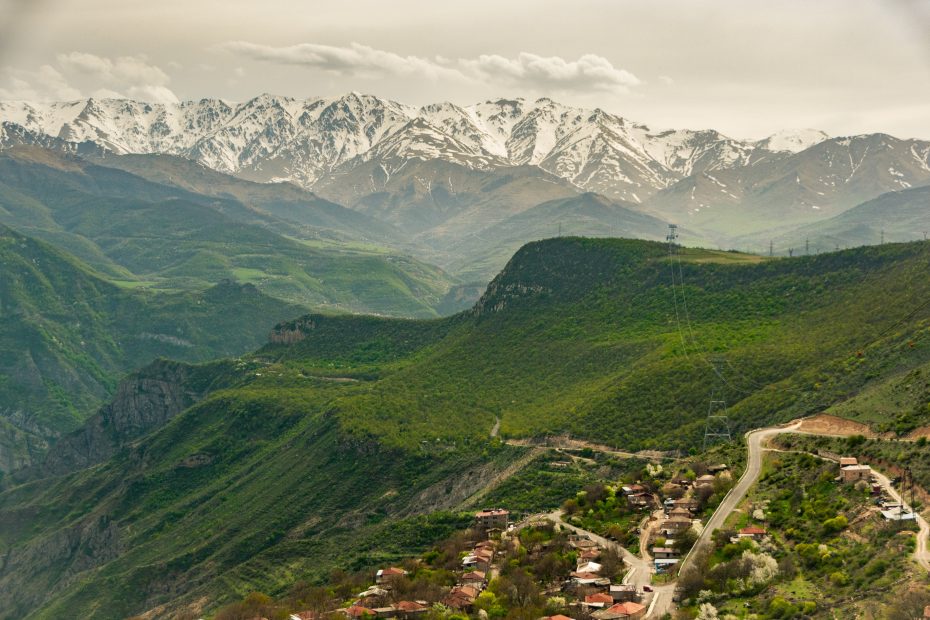Table of Contents
Introduction
Lake Sevan, situated in the central highlands of Armenia, is a stunning alpine body of water renowned for its natural beauty and rich history. Nestled 1900 meters above sea level, it is one of the largest freshwater high-altitude lakes in Eurasia. The crystal blue waters, surrounded by rolling mountains, have captivated people for millennia and remain a national symbol of Armenia.
Lake Sevan has been an integral part of Armenian culture, identity and economy for thousands of years. Numerous ancient monasteries and churches surround its shores, attesting to its religious significance. It has inspired art, music and folklore for generations. The lake also holds ecological importance as a habitat for endemic flora and fauna.
This article will explore the marvels of Lake Sevan – from its diverse wildlife to its cultural heritage, breathtaking vistas and the conservation efforts underway to preserve this natural wonder for posterity.
Unique Characteristics
Lake Sevan stands out for being one of the largest freshwater lakes in Eurasia’s Alpine region. Covering an area of 940 square miles, it contains over 33 billion cubic meters of highly oxygenated water.
The lake is home to multiple endemic animal species, such as the Sevan trout, found nowhere else in the world. Its mineral-rich waters, known for their sweet taste, also support unique algae and plankton. Over 20% of Armenia’s plant species can be found around the Sevan basin.
The water itself has medicinal and healing properties due to its rich mix of salts and minerals like sodium, magnesium, calcium and more. These lend the lake its iconic blue color. In ancient times, bathing in Lake Sevan was believed to have restorative powers.
Recreation and Leisure
The cool, clear waters of Lake Sevan provide a multitude of recreational opportunities. It is a popular beach and swimming destination for locals and tourists alike. Numerous resorts and recreational centers dot its coastline.
Sailing, windsurfing and kayaking are common activities on Lake Sevan. It is considered one of the best freshwater sailing destinations in Eurasia. Fishing is another popular pastime, with species like trout, crayfish and more found in the lake.
Hiking trails through beautiful forests and along the lakeshore provide options for nature lovers. For stunning views, one can take the hike up to Sevanavank Monastery on the peninsula. Paragliding from the steep shores is also popular.
Environmental Issues and Conservation
Unfortunately, Lake Sevan faces substantial environmental challenges. Decades of excessive irrigation resulted in the lake’s water level dropping by around 20 meters. This impacted its ecosystems and unique fauna like endemic fish species.
Pollution from agricultural runoff, littering and waste mismanagement also threaten the lake’s health. Authorities have been working to tackle these issues and raise awareness on conservation.
Ongoing efforts focus on restoring water levels, curbing pollution, managing irrigation sustainably, protecting biodiversity and involving local communities. International organizations like the UN have also supported conservation projects to save Lake Sevan.
Cultural and Economic Importance
Beyond its natural significance, Lake Sevan has immense cultural and economic value in Armenia. It provides over 90% of Armenia’s entire freshwater reserves, allowing large-scale irrigation for agriculture in the region.
The lake also produces hydroelectric power, accounting for 15% of the country’s energy needs. Its mineral extraction industry supports the national economy as well.
Tourism centered around Lake Sevan has grown into a pillar of Armenia’s economy. Local arts, crafts and cultural attractions bring in revenue and preserve traditions. Due to its beauty and biodiversity, the lake became an official national park in 1978.
In Armenian mythology and folklore, Lake Sevan is seen as a mystical realm and a source of wisdom. It has inspired countless works of literature, music, painting and other arts throughout history. Even today, it remains a muse for many artists and creators in the country.
Beautiful Sights
The shimmering blue waters of Lake Sevan, ringed by green mountains, are an incredible sight. Its color changes beautifully throughout the day with shifting sunlight. One can enjoy dramatically different views from various vantage points around the lakeshore.
Numerous peninsulas and islands add diversity to the landscape. The Sevan Peninsula has ancient monasteries like Sevanavank and Hayravank with stunning backdrops. The island of Sevan is a nature reserve home to unique flora and fauna.
Whether one chooses to visit at sunrise or sunset, the interplay of colors and shadows on the calm blue waters framed by peaks makes for an unforgettable spectacle. Photographers flock to capture these vistas.
Conclusion
Lake Sevan remains one of Armenia’s most prized natural and cultural treasures. Its biodiversity, medicinal waters, beauty and role in Armenian heritage make it truly unique. While environmental threats need addressing, the future looks bright for Lake Sevan with preservation efforts to safeguard its wonders. With responsible tourism and policies, its magic shall endure for generations to come.
FAQs
Where is Lake Sevan located?
Lake Sevan is located in the central highlands of Armenia, about 60 km northeast of the capital Yerevan.
What is the origin of Lake Sevan?
Lake Sevan was formed around 25 million years ago due to volcanic activity and tectonic shifts creating a depression that gradually filled with water from rivers and precipitation.
How deep is Lake Sevan?
The average depth of Lake Sevan is around 50 meters, with the deepest point being nearly 100 meters.
What fish species are found in Lake Sevan?
Lake Sevan is home to unique endemic species like the Sevan trout as well as other fish like crayfish, Gegharkuni trout, Artic char, and more.
What are the main environmental threats to Lake Sevan?
The major threats are declining water levels, pollution from agricultural runoff, litter and uncontrolled development, as well as threats to its endemic flora and fauna.
